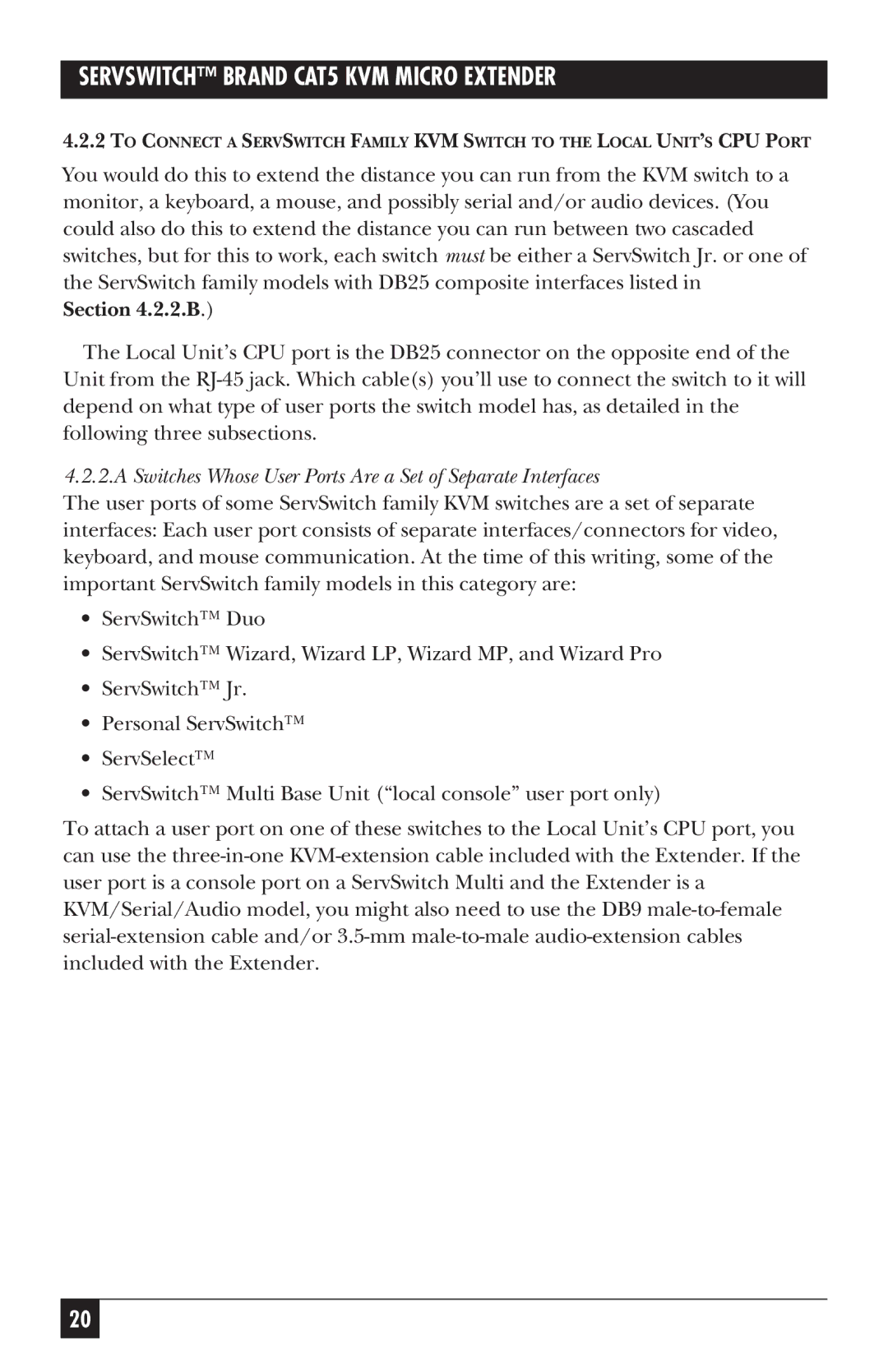
SERVSWITCH™ BRAND CAT5 KVM MICRO EXTENDER
4.2.2TO CONNECT A SERVSWITCH FAMILY KVM SWITCH TO THE LOCAL UNIT’S CPU PORT
You would do this to extend the distance you can run from the KVM switch to a monitor, a keyboard, a mouse, and possibly serial and/or audio devices. (You could also do this to extend the distance you can run between two cascaded switches, but for this to work, each switch must be either a ServSwitch Jr. or one of the ServSwitch family models with DB25 composite interfaces listed in
Section 4.2.2.B.)
The Local Unit’s CPU port is the DB25 connector on the opposite end of the Unit from the
4.2.2.A Switches Whose User Ports Are a Set of Separate Interfaces
The user ports of some ServSwitch family KVM switches are a set of separate interfaces: Each user port consists of separate interfaces/connectors for video, keyboard, and mouse communication. At the time of this writing, some of the important ServSwitch family models in this category are:
•ServSwitch™ Duo
•ServSwitch™ Wizard, Wizard LP, Wizard MP, and Wizard Pro
•ServSwitch™ Jr.
•Personal ServSwitch™
•ServSelect™
•ServSwitch™ Multi Base Unit (“local console” user port only)
To attach a user port on one of these switches to the Local Unit’s CPU port, you can use the
20
